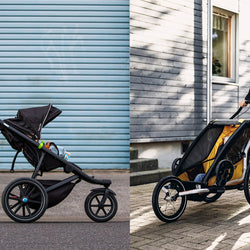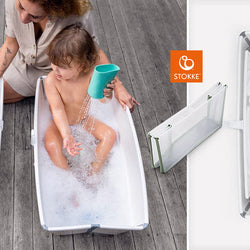Infant Milestones: What Milestone Should My Baby Hit Next?

by Baby Earth
Aug 08, 2018
Is my baby on the right track?
It’s a question many new mothers will ask as their baby grows, especially during the first year of life. The question is a valid one because infant milestone markers are what help both mom and doctor determine if a baby is where he or she is supposed to be.
Infant Milestones
While not every baby or child will develop at the same rate, there’s an average range in which an infant will most likely fit.
Now, if your baby isn’t adhering to the track exactly, don’t panic, it’s just a guide. However, if you’re concerned, be sure to talk to your doctor at your next appointment.
Article Continues Below Advertisement
Month 1 Infant Milestones
By the end of month one, your baby may be able to:
- Focus on objects or faces that are 8 to 12 inches away.
- Move his or her head from one side to the other.
- Bring hands to his or her face.
- Blink in response to bright lights.
- Respond to loud noises.
Month 2 Infant Milestones
By the end of month two, your baby may be able to:
- Smile.
- Follow objects with eyes.
- Make sounds other than crying, such as coos.
- Hold head up for short periods of time.
- Make smoother movements.
- Notice his or her own hands.
Month 3 Infant Milestones
By the end of month three, your baby may be able to:
- Hold head steady.
- Recognize your smell, face, and possibly, voice.
- Track moving objects with eyes.
- Squeal and gurgle.
- Lift head to 45-degree angle.
- Open and close hands.
- Hold and shake toys.
Month 4 Infant Milestones
By the end of month four, your baby may be able to:
Article Continues Below Advertisement
- Laugh.
- Roll over one way.
- Bear weight on legs.
- Coo when you talk to him or her.
- Grasp a toy.
Month 6 Infant Milestones
By the end of month six, your baby may be able to:
- Tell the difference between bold colors.
- Turn toward your voice.
- Play with his or her hands and feet.
- Recognize his or her own name.
- Roll over in both directions.
- Turn toward new sounds.
- Sit while being supported.
- Put objects in his or her mouth.
- Pass objects from one hand to the other.
- Eat solid food.
Month 9 Infant Milestones
At the end of nine months, your baby may be able to:
- Sit without support.
- Start crawling.
- Say “mama” or “dada” to no parent in particular.
- Stand while grasping onto something.
- Jabber or combine sounds.
- Drag object toward himself or herself.
- Eat with his or her fingers.
- Feel anxiety around strangers.
- Understand the permanence of objects.
- Point at objects.
- Reach for objects, such as toys.
- Test gravity by dropping toys or other objects from a high chair, etc.
- Look for lost/dropped toys or objects.
- Start recognizing himself or herself in the mirror.
Month 12 Infant Milestones
By the end of month twelve, your baby may be able to:
- Pull himself or herself to a standing position.
- Cruise while holding onto something, such as a piece of furniture or walker.
- Wave bye-bye.
- Say “mama” or “dada” to correct parent.
- Understand what “no” means.
- Clap hands.
- Show emotion when a toy is taken away.
- Shake head to indicate “no.”
- Understand how certain objects are used, i.e. mommy or daddy’s phone or sunglasses.
- Walk with the help of an adult.
- Understand certain commands.
For more information on infant and child development, visit HealthyChildren.org.
Article Continues Below Advertisement




